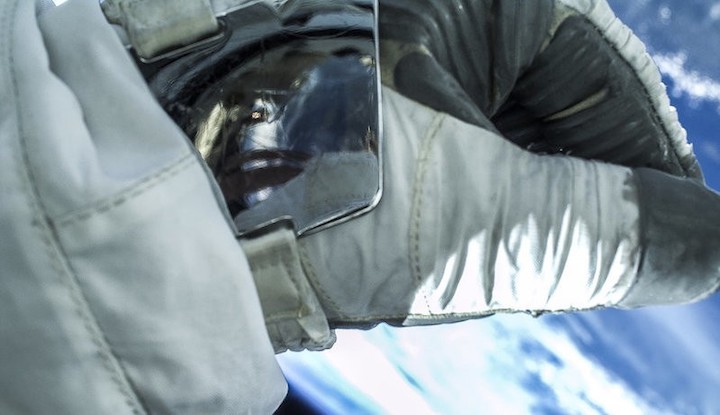27.06.2020

CAPE CANAVERAL, Fla. -- A spacewalking astronaut added to the millions of pieces of junk orbiting the Earth on Friday, losing a small mirror on his sleeve as soon as he emerged from the International Space Station for battery work.
Commander Chris Cassidy said the mirror quickly floated away. The lost item posed no risk to either the spacewalk or the station, according to NASA.
While millions of pieces of space debris orbit Earth, more than 20,000 items including old rocket parts and busted satellites are big enough to be tracked in order to safeguard the space station and working satellites.
Spacewalking astronauts wear a wrist mirror on each sleeve to get better views while working. The mirror is just 5-by-3 inches (7-by-12 centimeters), and together with its band has a mass of barely one-tenth of a pound (50 grams).
The mirror came loose in darkness. Cassidy inspected his spacesuit sleeve later in sunlight but didn't see any clues that might explain how the mirror came off.
The rest of the six-hour spacewalk went swimmingly.
Cassidy and Bob Behnken hustled through the first of four planned spacewalks to replace the last bunch of old station batteries. They removed five old batteries and installed two new ones — which checked out fine — getting a jump on their next spacewalk on Wednesday. They have four more to plug in before the job is complete.
"I think we’ve done enough for one day," Behnken said.
Once all the new batteries are installed in the coming weeks, the orbiting lab should be good for the rest of its life, according to NASA. The big, boxy batteries — more powerful and efficient than the old nickel-hydrogen batteries coming out — keep the station humming when it's on the night side of Earth.
The battery replacements began in 2017, with previous crews putting in 18 lithium-ion batteries, half as many as the old ones replaced. It's cumbersome work: Each battery is about a yard (meter) tall and wide, with a mass of 400 pounds (180 kilograms).
Their spacewalks are expected to continue through July before Behnken returns to Earth in August aboard a SpaceX Dragon capsule. Behnken and Doug Hurley made history at the end of May with SpaceX's first astronaut launch.
This was the seventh spacewalk for both men. Each has spent about 40 hours out in the vacuum of space.
As the spacewalk ended, Cassidy thanked the cleaning staff at Mission Control in Houston, kept especially busy during “this crazy, interesting time.”
“Everything has to be cleaned and sanitized multiple times a day, so a special shoutout to the custodial staff at the Johnson Space Center,” he said.
The spacewalkers also paid tribute to NASA's space station program manager, Kirk Shireman, retiring Friday after 35 years to go into private industry. “I'm sure we'll run into him in his future line of work," Behnken said. "Thank you, Uncle Kirk.”
Quelle: abcNews
